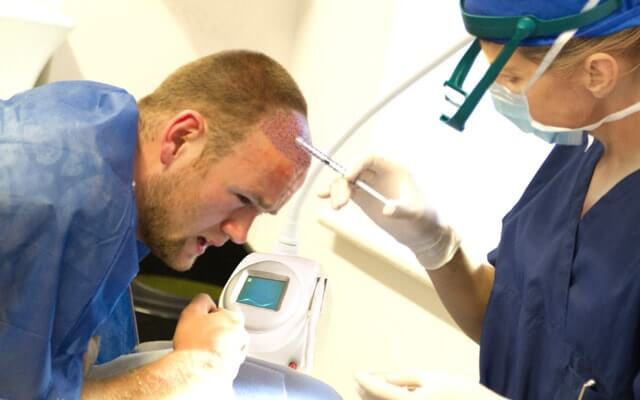
Wayne Rooney hair transplant

30/03/17
Wayne Rooney hair transplant
Famous football player Wayne Rooney started losing his hair at the age of 25. Due to the surface and higher density of the hair, he had to go for treatment twice in order to get the desired results.
In his autobiography, Rooney noted how much the problem of baldness bothered him.
After the treatment, Rooney shared a picture and impressions on his twitter profile. "It will take a few months for the hair to grow, it's still a little bloody, but that's normal," it was written below the picture of the football player. He also wrote: "I started balding at 25, why not solve the problem… I am delighted with the results."
Rooney underwent the classic micrografting method twice. It involves taking follicles from the parts of the head where there is hair, usually near the ear or from the back of the head, which are later implanted in the part where there is no hair. This micro operation leaves small scars from 0.6 to 1.25mm. This operation does not leave scars and recovery takes about 7 days. Hair begins to grow after 8 weeks and remains permanent. After 4 weeks, the hair can be treated, washed and dried normally as before the procedure.
Hair loss
Hair loss is not harmful to health, nor is it a symptom of the disease. It is a normal process in human development and aging, in the early period of life it is connected with genetics. For men, thick and lush hair has been a symbol of masculinity, strength and vitality for centuries, so baldness often wants to be covered up. In the most pronounced cases, baldness causes a loss of self-confidence, and because of that, attempts have been made for centuries to find a "miracle elixir" that would prevent baldness. Hair transplantation has been done since the 19th century, when the pioneers of this procedure tried to transplant entire strips of tissue with hair on the heads of bald patients. Fortunately, today's methods are much less invasive. Due to the development of hair transplantation techniques and instruments used to perform the procedure, the result is completely natural.
A few years after a hair transplant, additional balding can occur, leaving patients with strange, uneven areas of hair on their heads because the transplanted parts remain. Because of this, additional transplants are often performed.












